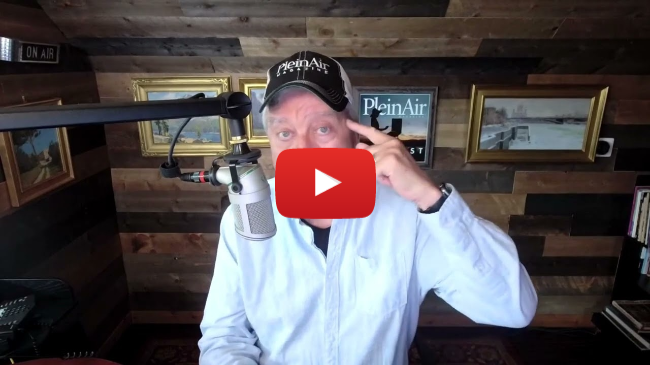Click here to see this email on the web |  | Thursday, December 8th, 2022 | | What's So Great About Cezanne? | By Christopher Volpe | Share this article:     |  | "Self-Portrait with Bowler Hat" by Paul Cézanne, 1885, via The New York Times | During the last 20 years of his solitary life, isolated and immersed in his work, Paul Cezanne reinvented painting as a crucible in which to experiment with new combinations of sensation and representation.
Cezanne painted traditional subject matter – bathers, still lifes, landscapes, portraits – but in a completely unconventional way. He did this not just to be different (though it's said that as a young rebel, he delighted in being a stubborn contrarian and proud of it). |  | Dish of Apples by Paul Cézanne, ca. 1876-1877, via Metropolitan Museum of Art, New York | Cezanne was not just a radical stylist. The unmistakable look of his paintings resulted from being faithful to his radical approach to seeing paired with a lack of style – an unpretentious, rough and ready application of paint. He was a representation painter who didn't represent things as they appear on other peoples' canvases or even as they appear to our logical brains.
He wanted to represent objects as they appear unfiltered by the rational brain – as experienced through the senses. He painted the world as it appeared to him strictly through raw, unprocessed, un-conditioned seeing.
When you really look at something, you don't see it all at once- there's a split second assessment of parts that your brain assembles into a whole. Cezanne disregarded the whole – that is, what we know a thing looks like – and painted the little fragments of a thing as we perceive them – one at a time, as they appear to our observational glances alone.
"Drawing is only a configuration of what you see," as Cézanne would state. Deceptively simple, he means that for him, drawing or painting was a piece by piece assemblage of what someone actually sees when they refuse to let their mind create a "fictional" whole but actually look at all the parts and angles of a thing we think we see called apple, mountain, or face.
By making us reconsider the artist's role in art-making, Cezanne literally made visible this fundamental insight of modern thought: We can't unsee the role the knower plays in knowing (truth is subjective, dependent on who's perceiving it). | — advertisement — |  |  | Paul Cézanne, Mont Sainte-Victoire, 1902–04, oil on canvas, 73 x 91.9 cm (Philadelphia Museum of Art, photo: Steven Zucker, CC BY-NC-SA 2.0) | For painting, this was the beginning of the today nearly universal embrace of art as a subjective process. We take it for granted that the artist allows the object to realize its inner essence in and through the act of painting – an essence that Cezanne the artist faithfully, carefully, and painstakingly traces.
An artist who is being true to the object is being true to the sensations which the artist experiences in the encounter with the object. This is Cezanne's great insight and enduring contribution to painting, sculpture (Rodin!), literature (Rilke, Joyce, Faulkner etc etc), and all the arts, really.
The irony is, that despite believing he was an ultra-honest realist obsessed with Truth, the work he created (deliberately interpenetrating surfaces, multiple perspectives, skewed spaces, wonky planes, angles, and shapes) set the stage for Cubism which led immediately to abstraction and modern art; without Cezanne, modern art – from the 1910's onward – becomes incomprehensible.Not for nothing did Picasso say, "Cezanne was the father of us all." | Seeing like an artist is a learned skill. In her video Drawing Basics – How to See, How to Draw, artist and author Claudia Nice demonstrates easy-to-follow techniques for achieving realistic drawings starting with simple shapes and strokes and build towards putting them all together and creating complex designs that are made easy with step-by-step instruction. |
|
|
|
— advertisement — |  | Art Marketing Minute | Art Marketing MinuteEric Rhoads addresses how to know whether or not a buyer is honest, and how to prepare for your first plein air painting competition |  | — advertisement — |  |
|
| | |
|
Inside Art is committed to protecting and respecting your privacy. We do not rent or share your email address. By submitting your email address, you consent to Streamline Publishing delivering regular email issues and advertisements. To end your Inside Art e-mail subscription and associated external offers, unsubscribe here. To learn more about Streamline Publishing events, products, and offerings visit StreamlinePublishing.com
Copyright 2022 Streamline Publishing, Inc. All rights reserved.
Inside Art® is a registered trademark of Streamline Publishing, Inc. |
|
|
|
|








No comments:
Post a Comment